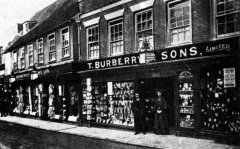 With the recession, it’s tempting to lower prices or offer discounts in order to attract sales. The trouble, as the car companies have found, is that they’re not adding any value to their products. The cars, the story the companies are telling, and the service haven’t changed.
With the recession, it’s tempting to lower prices or offer discounts in order to attract sales. The trouble, as the car companies have found, is that they’re not adding any value to their products. The cars, the story the companies are telling, and the service haven’t changed.
There may be a recession, but people will pay for things that they perceive to be worth the extra money. Astronomy buffs will pay up to $100,00 for a telescope. Businesses will pay FedEx $15 to deliver a letter, when the post office would do it for 44 cents.
The reason is value. FedEx offers additional services, such as guaranteed delivery, end to end tracking, and overnight service. The extra value translates into extra dollars that their customers willingly pay.
Some ways to add value:
- Bundle products or services together. If a muffin is $2.00, add the coffee for 50 cents more.
- Add extra services (overnight delivery, tracking) that the competition doesn’t offer.
- Offer a free extra with a minimum purchase (like Amazon does – this gets me every time, as I frantically look for something to buy to meet the $25 free shipping threshold). I want that free shipping, even though I sometimes end up spending more money to get it.
- Present your fees in comparison to the money your client will save. Find out how much your client is losing in downtime, lost productivity, or stress. If the problem costs $100,000 a year, $10,000 to fix it saves her $90,000 annually or $450,000 over 5 years.
- Break the cost down into a smaller piece: less than the price of a hamburger.
- Compare the single initial outlay to the cost of multiple replacements. Many years ago, I paid $595 for a Burberry raincoat. I’d been buying cheap $85 raincoats every year for three years, and got fed up. I swallowed hard paying for that coat, but I still have it (in perfect condition, and they’ll replace worn buckles for free). Buying new cheap raincoats would have cost me a total of $1,955. That expensive coat saved me $1,360.
What are you doing to increase your value? Share your stories and tips.

Target customer’s willing to pay more. Some people are going to negotiate on price regardless of the value. Don’t do business with them.
Thank you, Jodi, for helping us “get it”, in this case get the most bang for the buck as consumers and get the sales mind to consider what is in it for the prospect to present useful focused information.
When buying devices, I calculate total cost of ownership (TCO) over the expected time of use. That is I add up the purchase price and the consumables and common maintenance or repair estimates, then divide by the years to compare alternatives on a per-year basis similar to what you did with the Burberry raincoat.
Repeat Finding: An amazing portion of TCO for common household equipment goes to energy used or wasted on standby for the likes of fridge, air conditioner, TV, video recording device, Microwave. Turned out most of our purchases this way were definitely not cheap on the sticker, bit cheapest on the total. The most expensive ones were not the best choices either.
Sometimes, technology jumps offer unusual value. For example, giving away a well-working clean 1992 fridge in 1999 to buy a near top-of-the-line inverter model fully paid for this upgrade after 7 years at the electricity rates in Japan.
Bernd (CoCreatr), my brother (also an engineering type) performed a similar analysis when he bought his Honda hybrid a few years ago. He had spreadsheets calculating how much he’d save if gas went up to $2, $3, and $4 a gallon. He paid more for the car than he would have for the other car he was considering (a Chevy Malibu), but he goes out and hugs the Honda every time gas prices rise!
Amazon’s free shipping with orders over $25 gets me every time also. I can’t help but always order two books when I really only want one. It feels like I’m wasting money by paying for shipping when I can get it free by ordering another book.